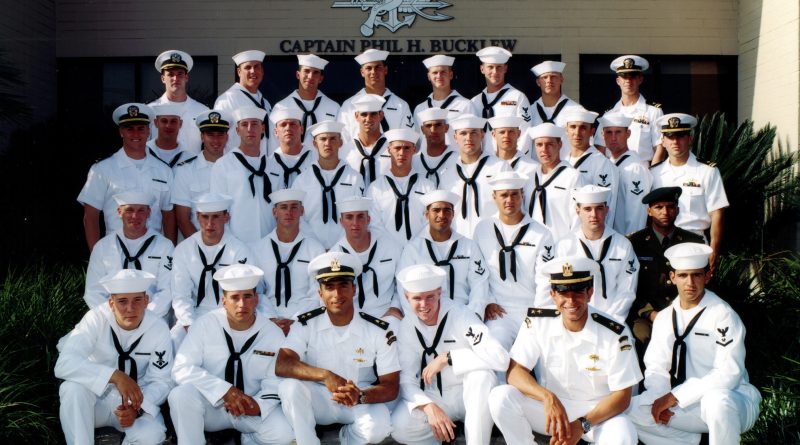US Navy Seals to shift focus to ‘global threats’
Ten years after they found and killed Osama bin Laden, United States Navy SEALs – an elite military force used in special operations across the globe – are undergoing major changes to improve leadership and expand their commando capabilities to better battle threats from powers like China and Russia.
The new plan cuts the number of SEAL platoons by as much as 30 percent and increases their size to make the teams more lethal and able to counter sophisticated maritime and undersea adversaries.
Increasing the size of the SEAL platoons will add high-tech capabilities. And decreasing the number of units will allow Howard to rid the force of toxic leaders and be more selective in choosing commanders. That decision is a direct result of the erosion in character that Navy officials have seen within the force.
Rear Admiral Hugh Howard, top commander for the SEALs, laid out his plans in an exclusive interview with The Associated Press.
He said the Navy’s special operations forces have been focused on “counterterrorism” operations but now must begin to evolve beyond those missions.
For the past two decades, many have been fighting in the deserts of Iraq and the mountains of Afghanistan. Now they are focused on going back to sea.
That decision reflects the broader Pentagon strategy to prioritise China and Russia, which are rapidly growing their militaries and trying to expand their influence around the globe.
US defence leaders say two decades of war have drained resources, causing the United States to lose ground against Moscow and Beijing.
The counterterrorism fight had its benefits, allowing the SEALs to sharpen their skills in developing intelligence networks and finding and hitting targets, said Howard, who heads Naval Special Warfare Command, which includes the SEALs and the special warfare combatant-craft crewmen.
As a result, Howard is adding personnel to the SEAL platoons to beef up capabilities in cyber and electronic warfare and unmanned systems, honing their skills to collect intelligence and deceive and defeat the enemy.
“We are putting pressure on ourselves to evolve and understand our gaps in capability and what our true survivability is against these threats” posed by global competitors, he said.
Admiral Mike Gilday, the chief of naval operations, said the goal is to better integrate the SEALs into the Navy’s missions at sea.
“As the Navy Special Warfare community returns more and more to its maritime roots, their increased integration across the fleet – above, under, and on the sea – will unequivocally enhance our unique maritime capabilities to help us compete and win against any adversary,” Gilday said.
In recent years it would be recalled, SEALs have been involved in a number of high-profile scandals. One of the most well-known was the arrest of Navy Special Operations Chief Edward Gallagher on war crimes charges that included the murder of an ISIL (ISIS) captive, and attempted murder in the shootings of civilians during a 2017 deployment to Iraq.
Gallagher was acquitted of all charges except one, posing in photos with the dead captive. A jury recommended his rank be reduced, cutting his pension and benefits as he was about to retire. But former President Donald Trump intervened and ordered that Gallagher be allowed to retire without losing his SEAL status.
More recently, a SEAL platoon was pulled out of Iraq in 2019 amid allegations of sexual assault. Members of SEAL Team 10 were involved in cocaine use and tampering with drug tests. And Navy SEAL Adam Matthews was sentenced to a year in military prison for his role in the 2017 hazing-related death of a US Army Green Beret in Africa.
Navy leaders also chafed as Navy SEALs broke away from their “quiet professional” ethos, publicising their participation in the raid into Pakistan that killed bin Laden, the al-Qaeda leader responsible for plotting the 9/11 attacks. Two SEALs wrote books about the mission, prompting a rebuke from the Naval Special Warfare commander at the time, Rear Admiral Brian Losey.

